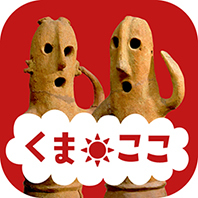令和3年度「地域観光資源の多言語解説整備支援事業」ー妻沼聖天山歓喜院 大師堂ー [その他]
Daishido Hall
大師堂
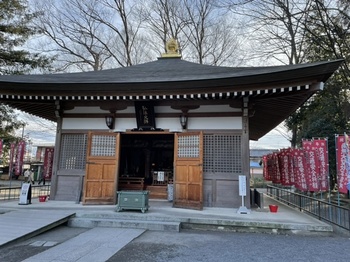
The Daishido Hall at Menuma Shodenzan Temple enshrines the renowned Buddhist priest Kukai (known posthumously as Kobo Daishi; 774–835), who helped popularize Buddhism in Japan. He founded the Shingon school of Buddhism, to which Menuma Shodenzan Temple belongs. The hall was built in 1995.
In Shikoku, where Kukai was born, there is a pilgrimage route called the Shikoku Henro. The route connects 88 temples where Kukai performed religious training. In the Kanto region (Tokyo and surrounding prefectures), a similar pilgrimage route has been established, linking 88 temples with ties to the priest. Menuma Shodenzan is the final temple on the Kanto pilgrimage route. Some pilgrims come to the Daishido Hall dressed in traditional white pilgrim attire. As Menuma Shodenzan is the last stop on the route, it is common for groups of pilgrims to take commemorative photographs in front of the Daishido. Many of these photographs are displayed inside the hall.
※この英語解説文は観光庁の地域観光資源の多言語解説整備支援事業で作成しました。

The Daishido Hall at Menuma Shodenzan Temple enshrines the renowned Buddhist priest Kukai (known posthumously as Kobo Daishi; 774–835), who helped popularize Buddhism in Japan. He founded the Shingon school of Buddhism, to which Menuma Shodenzan Temple belongs. The hall was built in 1995.
In Shikoku, where Kukai was born, there is a pilgrimage route called the Shikoku Henro. The route connects 88 temples where Kukai performed religious training. In the Kanto region (Tokyo and surrounding prefectures), a similar pilgrimage route has been established, linking 88 temples with ties to the priest. Menuma Shodenzan is the final temple on the Kanto pilgrimage route. Some pilgrims come to the Daishido Hall dressed in traditional white pilgrim attire. As Menuma Shodenzan is the last stop on the route, it is common for groups of pilgrims to take commemorative photographs in front of the Daishido. Many of these photographs are displayed inside the hall.
※この英語解説文は観光庁の地域観光資源の多言語解説整備支援事業で作成しました。
令和3年度「地域観光資源の多言語解説整備支援事業」ー妻沼聖天山歓喜院 本坊本堂ー [その他]
Kangiin Honbo Hall
本坊本堂
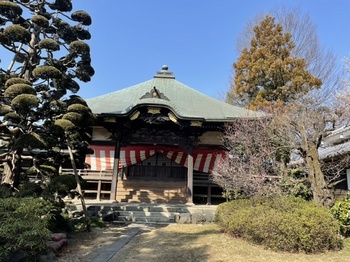
Kangiin Honbo Hall was completed in 1197 by founder Saito Sanemori’s son, who served as the head priest of Menuma Shodenzan Temple. The Honbo is used as the abbot’s residence.
Visitors can walk around the grounds, which include a small pond and topiaries. The building has intricate carvings from the Showa era (1926–1989) under the front gable and eaves. Under the curved gable, a carving portrays a hermit riding a ran, a mythical bird similar to a phoenix. The hermit is likely to be Baifuku (Mei Fu), a Daoist immortal. He was said to have been a governor in China during the Han dynasty (202 BCE–220 CE), who drank the elixir of immortality. Directly below this carving is a scene depicting a child breaking a large jar to free a friend who had fallen inside. It is an ancient Chinese allegory that reminds the viewer to remain calm in times of crisis, and that no matter how precious an object is, human life is always more valuable. The Honbo is the starting point for processions during the annual spring and fall festivals at the temple and is about 200 meters from the Shodendo main hall.
※この英語解説文は観光庁の地域観光資源の多言語解説整備支援事業で作成しました。

Kangiin Honbo Hall was completed in 1197 by founder Saito Sanemori’s son, who served as the head priest of Menuma Shodenzan Temple. The Honbo is used as the abbot’s residence.
Visitors can walk around the grounds, which include a small pond and topiaries. The building has intricate carvings from the Showa era (1926–1989) under the front gable and eaves. Under the curved gable, a carving portrays a hermit riding a ran, a mythical bird similar to a phoenix. The hermit is likely to be Baifuku (Mei Fu), a Daoist immortal. He was said to have been a governor in China during the Han dynasty (202 BCE–220 CE), who drank the elixir of immortality. Directly below this carving is a scene depicting a child breaking a large jar to free a friend who had fallen inside. It is an ancient Chinese allegory that reminds the viewer to remain calm in times of crisis, and that no matter how precious an object is, human life is always more valuable. The Honbo is the starting point for processions during the annual spring and fall festivals at the temple and is about 200 meters from the Shodendo main hall.
※この英語解説文は観光庁の地域観光資源の多言語解説整備支援事業で作成しました。
令和3年度「地域観光資源の多言語解説整備支援事業」ー熊谷うちわ祭り(熊谷八坂神社祭礼行事)ー [その他]
Kumagaya Uchiwa Festival
熊谷うちわ祭(熊谷八坂神社祭礼行事)
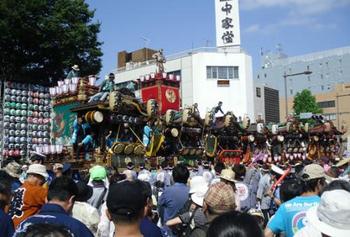
Downtown Kumagaya is filled with sound and color for three days in July during the annual Kumagaya Uchiwa Festival. Participants from twelve local neighborhoods pull decorative wheeled floats through the streets, accompanied by live music.
Fans for soaring temperatures
The Uchiwa Festival began in the mid-eighteenth century as a series of Shinto ceremonies at Kumagaya’s Atago Yasaka Shrine to ward off disease. By the mid-nineteenth century, the festival also included a procession through the streets of Kumagaya. Families and shops would make and hand out sekihan, rice cooked with red adzuki beams, an auspicious food believed to keep away evil. Around the start of the twentieth century, local merchants began to give out uchiwa fans instead of rice. Kumagaya is one of the hottest places in the Kanto region, and the fans have become very popular. Over time, the focus of the festival has shifted from disease prevention to praying for good harvests and commercial success, and the parades of decorated floats are now a characteristic feature of the festival.
Three days and nights of colorful floats and revelry
Each of Kumagaya’s twelve neighborhoods parades an elaborately carved and decorated wheeled cart-style float through the streets of the city in a display of community pride. Seven of these are dashi, tall floats that can reach a height of 9 meters, decorated with models of ancient deities and historical figures. The other five floats are called yatai. All the floats have musicians playing drums, cymbals, and flutes, and are accompanied by a procession of supporters carrying lanterns.
Around noon on July 20, a group of people drawn from all twelve neighborhoods carry a portable shrine from the Atago Yasaka Shrine to the downtown area. The dashi and yatai floats are then wheeled through the streets to the festival square near Kumagaya Station, around dusk. They are pulled with long ropes by teams wearing the colors of their neighborhood. As the sun sets, the floats are illuminated with paper lanterns.
Adjustable floats and passionate musicians
On the second day, National Highway No. 17 around Kumagaya is closed to traffic around noon for a procession of dashi and yatai floats. Pedestrians stroll the highway, enjoying food from stalls along the route. The dashi floats are adjustable so as to fit under pedestrian overpasses on the parade route. In the evening, the floats are lined up in front of the station in a fan formation.
On the final day, the floats are lined up in front of the Kumagaya Station for the festival’s climax. The music reaches a fever pitch, as the teams of musicians compete for their float to be selected to lead the festival the next year. The festival is an Important Intangible Folk Cultural Property of Kumagaya.
※この英語解説文は観光庁の地域観光資源の多言語解説整備支援事業で作成しました。

Downtown Kumagaya is filled with sound and color for three days in July during the annual Kumagaya Uchiwa Festival. Participants from twelve local neighborhoods pull decorative wheeled floats through the streets, accompanied by live music.
Fans for soaring temperatures
The Uchiwa Festival began in the mid-eighteenth century as a series of Shinto ceremonies at Kumagaya’s Atago Yasaka Shrine to ward off disease. By the mid-nineteenth century, the festival also included a procession through the streets of Kumagaya. Families and shops would make and hand out sekihan, rice cooked with red adzuki beams, an auspicious food believed to keep away evil. Around the start of the twentieth century, local merchants began to give out uchiwa fans instead of rice. Kumagaya is one of the hottest places in the Kanto region, and the fans have become very popular. Over time, the focus of the festival has shifted from disease prevention to praying for good harvests and commercial success, and the parades of decorated floats are now a characteristic feature of the festival.
Three days and nights of colorful floats and revelry
Each of Kumagaya’s twelve neighborhoods parades an elaborately carved and decorated wheeled cart-style float through the streets of the city in a display of community pride. Seven of these are dashi, tall floats that can reach a height of 9 meters, decorated with models of ancient deities and historical figures. The other five floats are called yatai. All the floats have musicians playing drums, cymbals, and flutes, and are accompanied by a procession of supporters carrying lanterns.
Around noon on July 20, a group of people drawn from all twelve neighborhoods carry a portable shrine from the Atago Yasaka Shrine to the downtown area. The dashi and yatai floats are then wheeled through the streets to the festival square near Kumagaya Station, around dusk. They are pulled with long ropes by teams wearing the colors of their neighborhood. As the sun sets, the floats are illuminated with paper lanterns.
Adjustable floats and passionate musicians
On the second day, National Highway No. 17 around Kumagaya is closed to traffic around noon for a procession of dashi and yatai floats. Pedestrians stroll the highway, enjoying food from stalls along the route. The dashi floats are adjustable so as to fit under pedestrian overpasses on the parade route. In the evening, the floats are lined up in front of the station in a fan formation.
On the final day, the floats are lined up in front of the Kumagaya Station for the festival’s climax. The music reaches a fever pitch, as the teams of musicians compete for their float to be selected to lead the festival the next year. The festival is an Important Intangible Folk Cultural Property of Kumagaya.
※この英語解説文は観光庁の地域観光資源の多言語解説整備支援事業で作成しました。
『通史でたどる 熊谷の歴史』 [お知らせ]
令和3年度「地域観光資源の多言語解説整備支援事業」ー坂田医院旧診療所ー [その他]
Former Sakata Clinic
坂田医院旧診療所
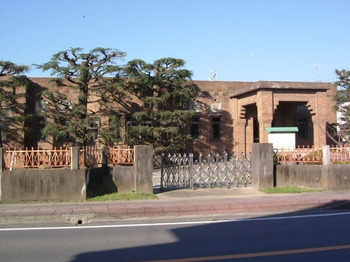
The former Sakata Clinic is located on the main shopping street of Menuma. Its wide street frontage and design details are typical of Western architecture of the 1930s. The clinic was established in 1931 by Dr. Sakata Yasutaro for obstetrics and internal medicine. At the time, the Menuma area around Menuma Shodenzan Temple was quite rural, and Western architecture was rare.
The single-story reinforced concrete building has a covered entrance porch with stepped archways, leading into a spacious waiting area. The facade is covered in textured ceramic tiles, adding to its distinctive appearance. The clinic has 10 rooms arranged around a long hallway, including a dispensary, an examination room, a delivery room, an operating theater, an X-ray room, and a dark room. Much of the original equipment and fittings remain, including glass syringes and flasks, surgical tools, an examination bed, X-ray equipment, and medical texts.
Original light fittings range from decorative Art Deco pendant lamps to molded milk-glass globes. The light fittings and furnishings are practical, in keeping with the requirements of a medical clinic, but follow the design trends of the time.
The interior changed little over the years until the clinic closed in the 1980s. The clinic has been preserved by the town as an example of Art Deco architecture and of cutting-edge medical technology in the early years of the Showa era (1926–1989). The clinic symbolizes the modernization that was happening at that time and is registered as a Tangible Cultural Property.
The building is opened to the public several times a year.
※この英語解説文は観光庁の地域観光資源の多言語解説整備支援事業で作成しました。

The former Sakata Clinic is located on the main shopping street of Menuma. Its wide street frontage and design details are typical of Western architecture of the 1930s. The clinic was established in 1931 by Dr. Sakata Yasutaro for obstetrics and internal medicine. At the time, the Menuma area around Menuma Shodenzan Temple was quite rural, and Western architecture was rare.
The single-story reinforced concrete building has a covered entrance porch with stepped archways, leading into a spacious waiting area. The facade is covered in textured ceramic tiles, adding to its distinctive appearance. The clinic has 10 rooms arranged around a long hallway, including a dispensary, an examination room, a delivery room, an operating theater, an X-ray room, and a dark room. Much of the original equipment and fittings remain, including glass syringes and flasks, surgical tools, an examination bed, X-ray equipment, and medical texts.
Original light fittings range from decorative Art Deco pendant lamps to molded milk-glass globes. The light fittings and furnishings are practical, in keeping with the requirements of a medical clinic, but follow the design trends of the time.
The interior changed little over the years until the clinic closed in the 1980s. The clinic has been preserved by the town as an example of Art Deco architecture and of cutting-edge medical technology in the early years of the Showa era (1926–1989). The clinic symbolizes the modernization that was happening at that time and is registered as a Tangible Cultural Property.
The building is opened to the public several times a year.
※この英語解説文は観光庁の地域観光資源の多言語解説整備支援事業で作成しました。
郷土史講座「熊谷の中世石造物について」 [普及事業]
令和2年度に市史編さん事業で刊行された『熊谷市史調査報告書 中世石造物』を執筆された先生方が、中世石造物の各テーマごとにわかりやすく解説する講座を、熊谷市立図書館4階講座室で下記のとおり開催します。
皆様の参加をお待ちしています。
記
とき・テーマ・講師:
5月24日(火)熊谷の板碑の発生と特徴:磯野治司氏
5月31日(火)中世石造物の来歴を読む:野口達郎氏
6月7日(火)銘文・形態から見る中世石造物:伊藤宏之氏
6月14日(火)宝篋印塔・五輪塔の特徴について:栗岡真理子氏
時 間:13:30~15:30(6月7日は15:00~16:30)
ところ:熊谷市立熊谷図書館4階第一講座室(熊谷市桜木町2丁目33番地2)
定 員:40人
費 用:2,000円(熊谷市史調査報告書『中世の石造物』持参の方は無料)
申 込:熊谷市立熊谷図書館美術・郷土係まで:電話048-525-9463
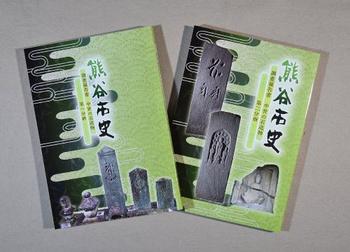
皆様の参加をお待ちしています。
記
とき・テーマ・講師:
5月24日(火)熊谷の板碑の発生と特徴:磯野治司氏
5月31日(火)中世石造物の来歴を読む:野口達郎氏
6月7日(火)銘文・形態から見る中世石造物:伊藤宏之氏
6月14日(火)宝篋印塔・五輪塔の特徴について:栗岡真理子氏
時 間:13:30~15:30(6月7日は15:00~16:30)
ところ:熊谷市立熊谷図書館4階第一講座室(熊谷市桜木町2丁目33番地2)
定 員:40人
費 用:2,000円(熊谷市史調査報告書『中世の石造物』持参の方は無料)
申 込:熊谷市立熊谷図書館美術・郷土係まで:電話048-525-9463

.jpeg)
